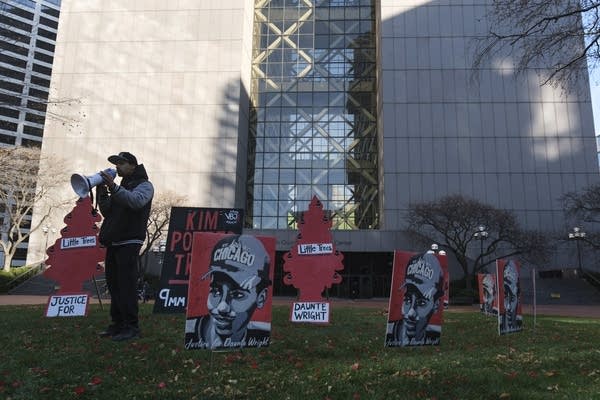Kimberly Potter trial: 4 jurors chosen; defense says Potter to testify
Tuesday's proceedings have ended; court resumes 9 a.m. Wednesday

A community members speaks to protesters outside the Hennepin County Government Center in Minneapolis as jury selection in the trial of former Brooklyn Center police officer Kimberly Potter begins on Nov. 30, 2021.
Tim Evans for MPR News
Go Deeper.
Create an account or log in to save stories.
Like this?
Thanks for liking this story! We have added it to a list of your favorite stories.


